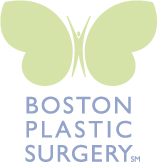Bring the spotlight back to your face
Our ears have a surprisingly significant effect on our overall appearance. When our ears look natural and proportional to our facial features, we hardly notice them. However, if your ears seem too large for your face, or they seem to protrude prominently from your head, you may be quite self-conscious about your appearance.
Otoplasty in Boston can be an excellent solution for those who are embarrassed by ears that they feel are too large or prominent for their head. This short surgery can help you improve facial harmony and feel more confident in your appearance.
What can otoplasty correct?
- Set prominent ears back closer to the head
- Reduce the size of overly large ears
- Correct specific contour irregularities
What is ear reshaping surgery like?
Otoplasty can be performed under general anesthesia or sometimes using local anesthesia with sedation.
The surgery usually entails making an incision in the back of the ear and performing corrective procedures on the cartilage in order to reduce the prominence and improve the contour. Additional incisions can also be made to address an excessively large outer ear (scaphal reduction), the earlobe, or to address any specific contour irregularities that are of concern.
The procedure is customized based on a detailed evaluation of ear anatomy and landmarks, measurements taken, and patient goals. Most patients recover quickly and return home the same day.
In most cases, ear surgery will leave a faint scar on the back of the ear that will fade with time. Read our ear surgery post-operative instructions to find out more about the recovery process.
Enhancing facial balance with complimentary procedures
While many patients choose to have otoplasty alone, this procedure can also be performed in tandem with chin augmentation, earlobe repair, or any other facial procedure to achieve a more comprehensive improvement in facial harmony. At your personal consultation, our surgeons will be happy to discuss any procedures you are considering.
References »
Papadopulos NA, Niehaus R, Keller E, Henrich G, Papadopoulos ON, Staudenmaier R, Kovacs L, Peter Herschbach, Pototschnig H, Machens HG. The Psychologic and Psychosocial Impact of Otoplasty on Children and Adults. Journal of Cranio-Maxillofacial Surgery. 2015 Nov;26(8):2309-14. doi: 10.1097/SCS.0000000000001990.
Handler EB, Song T, Shih C. Complications of otoplasty. Facial Plastic Surgery Clinics of North America. 2013 Nov;21(4):653-62. doi: 10.1016/j.fsc.2013.08.001.
Siegert R, Magritz R. Otoplasty and Auricular Reconstruction. Facial Plastic Surgery & Aesthetic Medicine. 2019 Aug;35(4):377-386. doi: 10.1055/s-0039-1693745.
Hoshal SG, Morisada MV, Tollefson TT. Reducing Surgical Risks for Otoplasty. Facial Plastic Surgery Clinics of North America. 2023 May;31(2):253-261. doi: 10.1016/j.fsc.2023.01.011.
Ordon A, Wolfswinkel E, Shauly O, Gould DJ. Aesthetic Otoplasty: Principles, Techniques and an Integrated Approach to Patient-Centric Outcomes. Aesthetic Plastic Surgery. 2019 Oct;43(5):1214-1225. doi: 10.1007/s00266-019-01441-2.
Stewart KJ, Lancerotto L. Surgical Otoplasty: An Evidence-Based Approach to Prominent Ears Correction. Facial Plastic Surgery Clinics of North America. 2018 Feb;26(1):9-18. doi: 10.1016/j.fsc.2017.09.002.
Naumann A. Otoplasty – techniques, characteristics and risks. GMS Curr Top Otorhinolaryngol Head Neck Surg. 2007;6:Doc04. Epub 2008 Mar 14.

